It’s hard to think of a movie weapon more iconic or impressive than the lightsaber. With its unearthly glow and that mesmerizing hum, it represented the perfect blend of Star Wars’ romantic fantasy and sci-fi elements: a sword, which could have been a samurai blade or King Arthur’s Excalibur, whose blade glowed and crackled like a magically frozen laser blast. To quote Jedi Master Ben Kenobi (Alec Guinness), it was “Not as clumsy or random as a blaster. An elegant weapon, for a more civilized age.”

It is rather ironic then, that this amazing, elegant weapon – which George Lucas himself describes as “a symbol for a simpler time, a time when honor ruled” – started life as the flash attachment to an old 4×5 camera.
Roger Christian, then a set decorator on Star Wars, constructed Luke Skywalker’s (Mark Hamill) first lightsaber (previously his father, Anakin’s) by adding cabinet T-track to some Graflex flash gun handles he found in a photography shop in London’s Great Marlborough Street. With the application of a few greebles and a clip, requested by Lucas so Luke could attach the weapon to his belt, the first-ever lightsaber handle was created.
More challenging, however, was finding a way to make the fantastical creation’s magnetically contained plasma work on screen. A physical blade was required, rather than something entirely animated, so the ‘swordfight’ scenes could be choreographed appropriately. “We need the real pole to tell us where the sword blade is,” explained Lucas.
The initial solution was to light the blade practically. Special production and mechanical effects supervisor John Stears came up with a rotating, three-sided wooden-dowel rod, which was coated with Scotchlite retroreflector material (typically used for road signs). When a lamp was placed next to the camera, the lightsaber would reflect back the lightsource with an intensity that made it look like it was generating its own glow. At least, that was the intention.
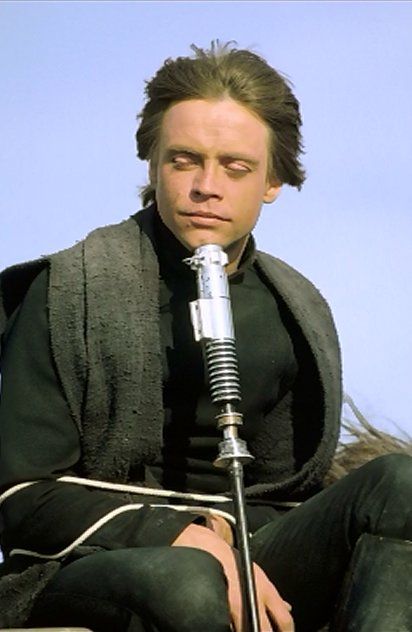
“The problem,” said Hamill, “was that when you moved it out of a certain area it went from glowing and looking great to just a rotating pole.” The blade was also, it turned out, impractically fragile, not able to take much of an impact before it snapped.
The immediate visual solution was to rotoscope the glowing blade effect onto each lightsaber, a painstaking process undertaken on the first film by Korean animator Nelson Shin, who introduced the idea of the plasma-blades looking “a little shaky”, which somehow made them feel more of a realistic and tangible.
Meanwhile, genius sound designer Ben Burtt, inspired by Ralph McQuarrie’s original concept art of Luke and Darth Vader battling with “lazer swords” (as an early script draft described them), concocted the iconic lightsaber hum. His prime inspiration was the sound of an idling film projector. “The motors would sit there with this kind of magical, mysterious humming sound that I thought was musical in a way,” said Burtt. Yet he needed another ingredient: a specific kind of buzz. This he discovered almost accidentally, while walking around his apartment with a broken mic cable, which had lost its shielding. As he moved past his television, the hum from its picture tube was picked up by the broken wire, creating a buzz. “That’s a great buzz,” Burtt thought, “that sounds dangerous.”
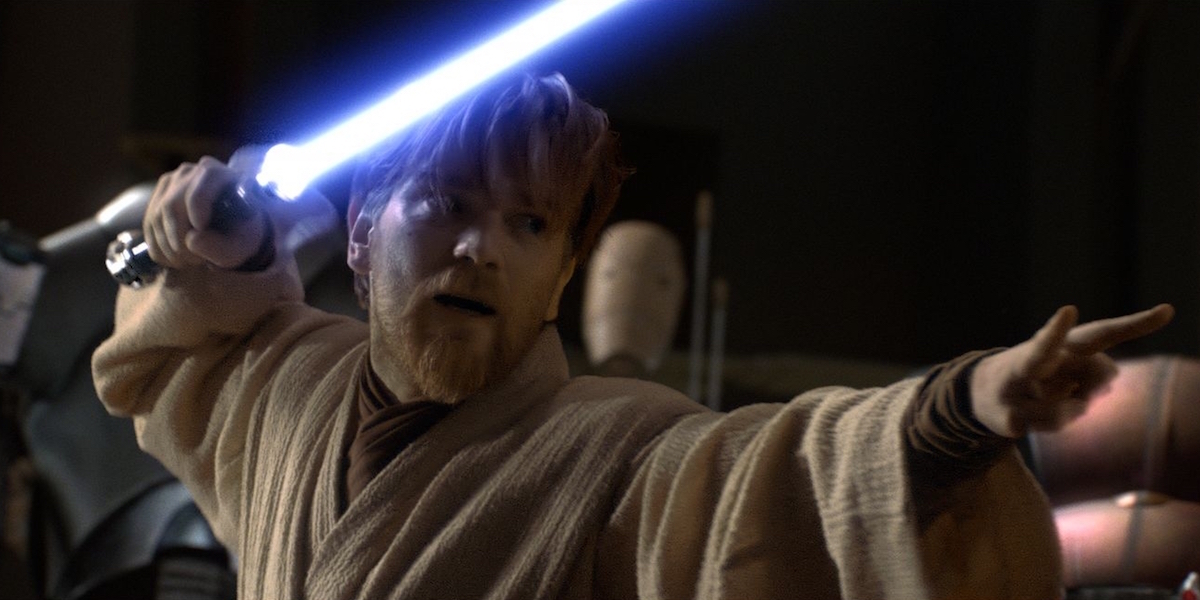
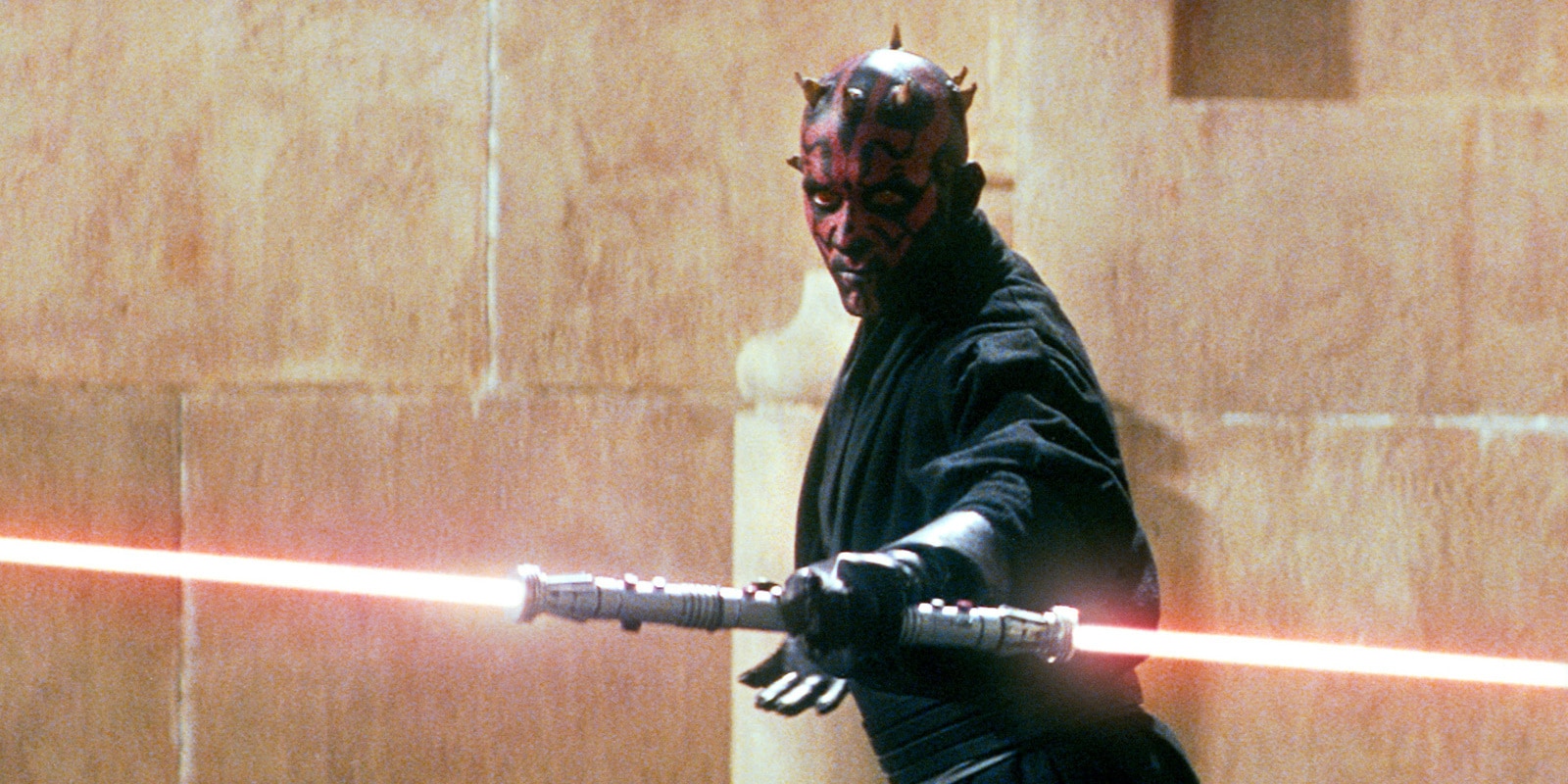
While Burtt’s buzz-and-hum would remain largely unmodified throughout the Star Wars saga that followed, the lightsabers themselves went through numerous changes in fabrication. Unsurprisingly, the spinning reflective blades were dropped for The Empire Strikes Back, replaced by a stronger carbon rod, which would be entirely rotoscoped in post-production. Despite still being fragile and needing constant replacement during fight scenes, this rod was used throughout Return of the Jedi’s shoot, too.
Sixteen years later, when Lucas launched into his prequel trilogy with The Phantom Menace, he knew he’d need better, stronger blades. Now we were going to see the Jedi knights at the peak of their Force-wielding powers, so the lightsaber combat would be more frequent and, as Lucas put it, “more ferocious”. Out went the carbon rod, and in came new blades of steel and aluminum.
Yet these were frustratingly fragile, too. They bent and flexed, requiring constant replacement and, even more worryingly, had a tendency to send small fragments flying when struck during combat, requiring them to be coated in shrink wrap. It wasn’t until third prequel Revenge of the Sith that something truly durable was implemented, with aluminum and steel replaced by carbon fiber laminated with glass and plastic. Although now, of course, these blades could really hurt if they hit you.
For the most part, each lightsaber’s glow continued to be a matter of rotoscoping, although this was digitally achieved from 1999 onwards. However, for the 21st Century sequel trilogy, proper light-up lightsaber props were introduced, to allow for some atmospheric in-camera lighting.
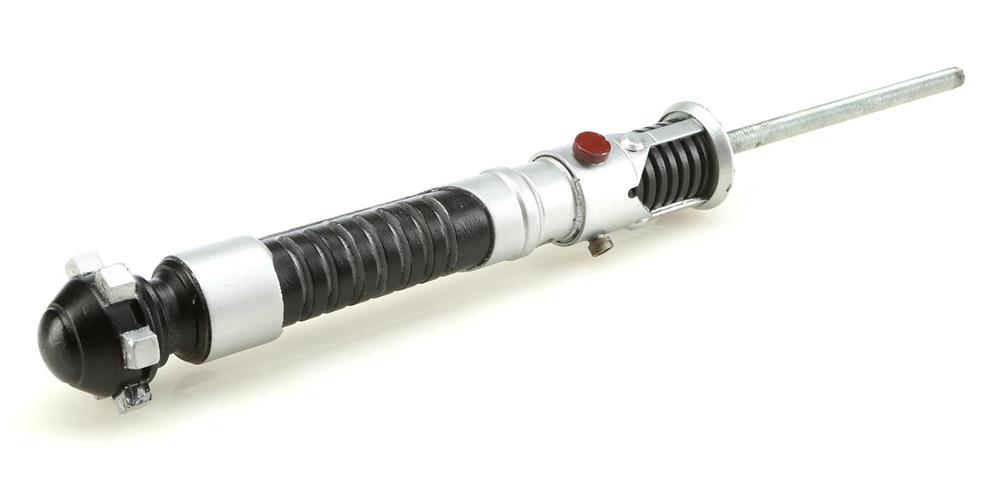
The prequel trilogy also marked the first time a different era of lightsaber was seen on screen. In an age before Emperor Palpatine took power, and Jedi policed the galaxy, lightsabers were sleeker and more decorative in many ways. In Episode I, we got Darth Maul’s (Ray Park) cool and deadly double-ended blade. Then there was Mace Windu (Samuel L. Jackson)’s purple lightsaber, specially requested by the actor himself (Lucas reluctantly acquiesced) Aside from Maul and Windu’s unique weapons, Obi-Wan Kenobi’s initial saber had a more purposeful, machined design to it, while the evil Count Dooku’s saber was the first on-screen saber with a curved hilt, adding more elegance to the weapon.
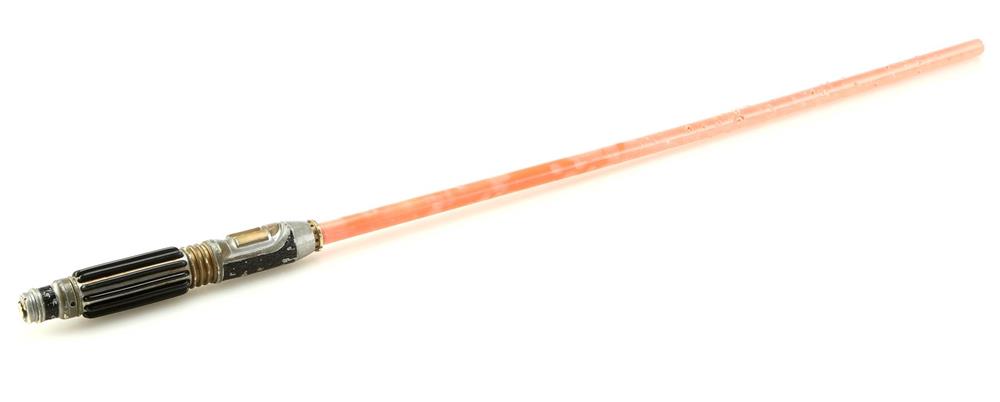

It’s fair to say that audiences have never grown bored of seeing lightsabers swoosh and clash on screen. In 2008, the lightsaber was voted the best-ever movie weapon, and it’s hard to think of anything which has appeared since to beat it. And it just keeps on evolving. What started with Luke’s lightsaber going from blue to green blades, conceived because Lucas realized it looked better against the azure Tatooine sky than Luke’s original blue, has resulted in change that, more recently brought us Kylo Ren’s (Adam Driver) impressive blade, with its crackling plasma quillions.
Thanks to the animated Star Wars series’, lightsaber styles have only diversified, with the addition of the Inquisitors’ circular spinning blades in Rebels, and Ezra Bridger’s blaster/saber combo in the same series (we’re sure Obi-wan wouldn’t approve). Most exciting, however, has been the introduction of the “darksaber”, a unique black-bladed weapon introduced in Clone Wars, created by the galaxy’s only Mandalorian Jedi, and given its live-action debut at the end of The Mandalorian Season 1, in the hands of the nefarious Moff Gideon (Giancarlo Esposito).
It seems certain that the lightsaber will keep evolving and changing into impressive new forms for many decades to come. Which isn’t bad for an old camera-flash handle…
The lightsaber lots and 865 more lots of iconic props and costumes will be open for bidding in our Entertainment Memorabilia Live Auction – Los Angeles starting July 27th. Click the banner below to view our preview gallery and don’t forget to register for bidding.
Follow us on Twitter and Facebook to be the first to know about all current & upcoming Propstore Auctions and more!
